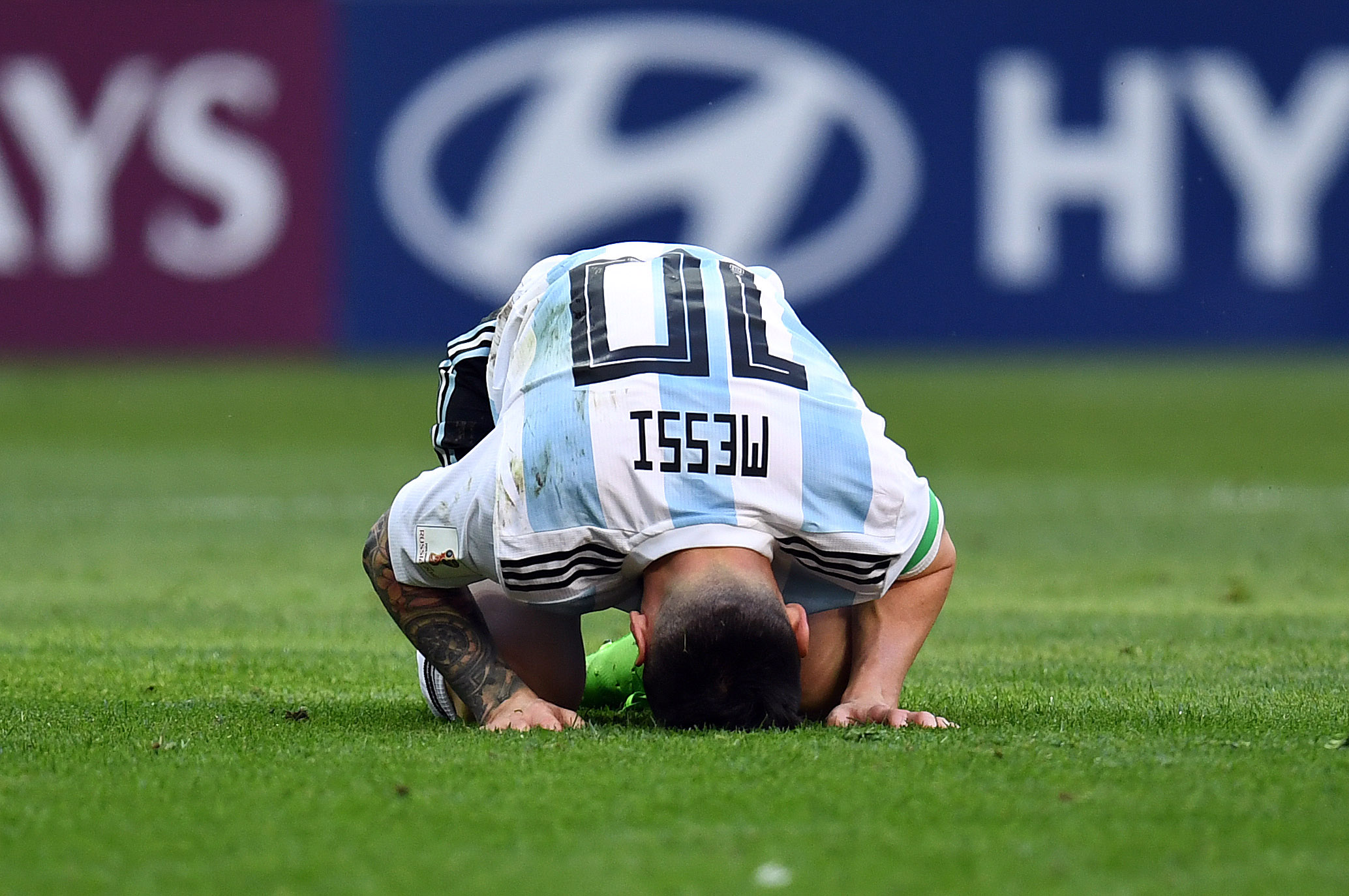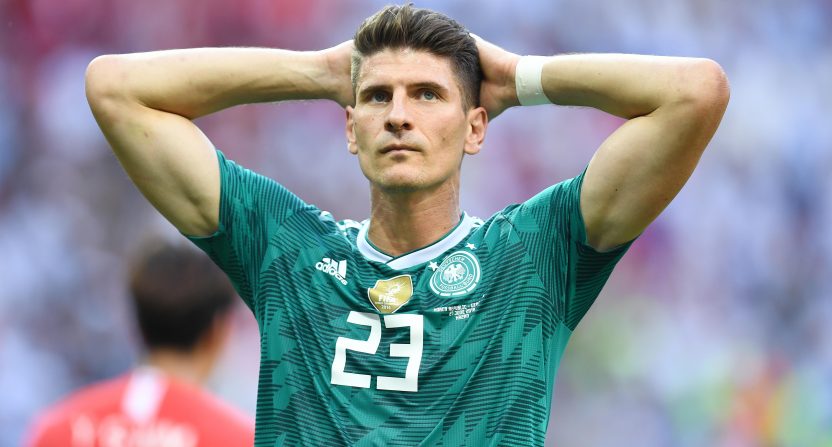Despite the USMNT not taking part, it’s hard to argue that this hasn’t been one of the best World Cups to ever be played. There have been very few blowouts and only one scoreless draw, the drama has been top notch, the amount of late goals are unparalleled, and every game seems to pack a punch.
And of course there have been plenty of upsets.
Holders Germany lost their opening match to Mexico and then finished last in their group which was topped by Sweden. Russia, a team that was very lowly regarded by almost everyone, advanced out of their group and went to the quarterfinal. And Argentina? The team that went to the final in 2014 as well as Copa America finals in 2015 and 2016, were mere minutes away from not getting out of their group.
The craziness of the group stage even created what many called a “half-bracket of death” referring to one side of the knockout round bracket that had Uruguay, France, Argentina, Brazil, Mexico, and Belgium all on the same side of the bracket while teams like Sweden, Croatia, Russia, and Switzerland were on the other.
The thing is, what exactly made that side the “half-bracket of death?” It really was nothing more than the history behind the names of those countries because it certainly wasn’t based on how they were performing on the field this month.
At the macro level, international soccer is merely a game of haves and have-nots. A total of eight teams have ever won the World Cup, and because of that, the expectations for these teams are always higher regardless of whether or not these teams are actually good. Spain failed to make it out of the group stage in the 2014 World Cup and were knocked out in the round of 16 at both Euro 2016 and the 2018 World Cup. Yet they are still considered one of the big boys because of a stretch of dominance over a four-year period nearly a decade ago.
Hell, the Netherlands didn’t even qualify for Euro 2016 and we still acted shocked when they didn’t qualify for the World Cup!
After losing their opening match to Mexico and barely beating Sweden on a last second ridiculous free kick it was still deemed an ‘upset’ when Germany failed to make it out of their group.
Why?
Because Germany won the World Cup four years ago, because Germany won the Confederations Cup last year, because Germany have won the World Cup four times, because they made the final in 2002 and the semifinals in 2006 and 2010. Basically, Germany are always really good and when they entered the final group game on the outside looking in, everyone and their mother still assumed that they’d pull it out and get into the knockout stage because they always do.

In hindsight, it’s really easy to see why Germany didn’t get out of the group. There’s turmoil in the dressing room. The squad is terribly unbalanced. They somehow lack creativity going forward. Most importantly, they’ve gotten old and with that age they’ve lost a step leaving the squad with an alarming lack of pace. When the UEFA Nations League kicks off in September, the German squad is going to look drastically different.
We shouldn’t have been surprised by Germany’s struggle, or by Iceland holding Argentina to a draw but of course we were, for the simple reason that it’s very hard to actually gauge who’s good in international soccer and who isn’t.
Following the 2014 World Cup, Germany were ranked #1 in the FIFA rankings. Runners-up Argentina were ranked #2. That made sense because, well we had just played the biggest tournament in the world and that’s how they finished. But other than following a World Cup, the FIFA rankings are a crock of you know what. And thankfully that will be changed with a bit more fair Elo ranking.
Perhaps the biggest issue is mainly, we rarely ever get to see national teams get seriously tested. Other than South America, where all 10 teams play each other in a grueling three year qualifying tournament, World Cup qualifying is designed to get the best teams from each confederation into the tournament.
Other than the last cycle, when some freak FIFA rankings manipulation by Wales and Romania resulted in Spain and Italy being in the same group, Europe’s big boys are all spread out among the groups. The same thing happens in Asia and Africa as well. The reason is simple, they beat up on the minnows of the confederation so they can be the representatives on the big stage.
The result of that is we learn absolutely nothing during qualifying. We’ve seen it happen plenty of times to England who would routinely go unbeaten in qualifying only to crash out in the tournament. In qualifying, England are always the top dog, and they have to play that way. We don’t know how they’ll react when they get punched in the mouth, and it’s not indicative of how they’ll need to play come tournament times when they play much better competition. England showed that they can compete in this World Cup but we couldn’t have gotten that by them playing Lithuania and Malta.
There’s also the whole issue of when qualifying takes place. Germany played 40 percent of their qualifying matches in 2016, that’s ages ago. Qualifying as a whole ends in either October or November, eight or nine months before the World Cup kicks off. That’s nearly an entire club season’s worth of time for players to lose their form or for young players to break out and break into the team. Not to mention, someone getting an injury right before the tournament and four years of prep for that person is gone.

The exception to this is qualifying in South America, where all 10 teams play each other twice. That means the big boys play the big boys and there’s nowhere to hide.
When Argentina struggled throughout qualifying and barely got through, it should have rang alarm bells for us. Instead, we just assumed it was a blip because “they’re Argentina, and they have Messi,” and they’ve won the World Cup twice over 30 years ago. Therefore, they’re one of the big boys and we just expect them to be good no matter what, even if it means ignoring the complete inner turmoil that’s going on with both the team and the federation. That’s why I took offense to John Strong saying “Iceland beats Argentina 1-1.” I thought it overrated wildly overrated Argentina and completely sold Iceland short. Yes, there isn’t a Lionel Messi on Iceland but Iceland has the team and that’s worth something.
The crazy thing about the World Cup is that there’s a micro and macro level to view it. On the micro level, the game by game level, upsets happen all the time. Every year, there’s a team in the quarterfinals that no one expected. In 2014, it was Costa Rica and in 2010, it was Paraguay. But on the macro level, the tournament as a whole, they don’t happen. It’s mostly the same teams that win it every time.
Perhaps that’s why we think there were so many upsets in this year’s tournament, because we’re so fine tuned to just put teams through based on their names when the reality is, there are so many different factors that can effect what happens when you put all these talented players on the field together. And the truth is, we haven’t seen any team play enough meaningful games in the recent past to actually know how good they are.







